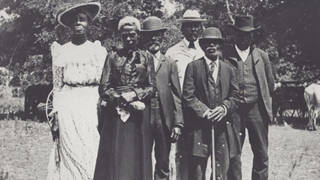
By Amy Goodman & Denis Moynihan
Emmett Till would have turned 82 on July 25th. But he was murdered at 14, on August 28th, 1955, dragged from his great-uncle’s home in Money, Mississippi by two white men for allegedly whistling at a white woman. They beat, tortured and shot Emmett, tied a heavy cotton gin fan to him with barbed wire, and threw his body into the Tallahatchie River. His bloated, disfigured corpse was discovered several days later. His mother, Mamie Till-Mobley, had his body returned to Chicago for his funeral. She insisted on an open casket so the world would see the brutality of bigotry, the ravages of racism. Jet Magazine and other publications carried photos of Emmett Till’s beaten, distended face in his coffin, shocking the world and galvanizing the civil rights movement to defeat Jim Crow.
“I believe that the whole United States is mourning with me,” Mamie Till-Mobley said of her decision. “And if the death of my son can mean something to the other unfortunate people all over the world, then for him to have died a hero would mean more to me than for him just to have died.”
Sixty-eight years later, President Joe Biden formally established the Emmett Till and Mamie Till-Mobley National Monument, signing the proclamation on Emmett Till’s birthday.
Three sites make up the monument: the Roberts Temple Church of God in Christ on Chicago’s South Side, where Emmett’s funeral was held; the Tallahatchie County Second District Courthouse in Sumner, Mississippi, where Emmett’s two murderers were acquitted by an all-white jury, and the Graball Landing site along the Tallahatchie River, believed to be where Emmett Till’s body was found. The memorial sign at Graball Landing was made bulletproof to withstand the attempts to destroy it. It’s been shot at and vandalized countless times.
The painful history of Emmett Till’s lynching and his mother’s remarkable courage is seared into the fabric of this country. Less than three months later, sickened by the photos of Emmett, Rosa Parks refused to give up her seat to a white passenger on December 1st, 1955, sparking the Montgomery Bus Boycott. The March on Washington in 1963 was held on August 28th, the anniversary of Emmett Till’s murder.
Yet there are people now attempting to suppress history and whitewash the systemic racism so central to our nation. Leading the pack of these revisionists is Florida Governor Ron DeSantis, a Republican presidential candidate. DeSantis first forced the revision of the state’s AP African American Studies curriculum, purging key Black writers, feminists, and references to Black Lives Matter.
Then, last week,, the Florida Department of Education released its social studies standards for this school year. The 216-page document states, “Instruction includes how slaves developed skills which, in some instances, could be applied for their personal benefit.”
Gov. DeSantis was asked to explain this shocking rewrite of the brutal, bloody history of slavery in the United States, while at a campaign stop in Utah:
“They’re probably going to show some of the folks that eventually parlayed, you know, being a blacksmith into doing things later in life.”
Renowned civil rights attorney and Florida resident Ben Crump responded on the Democracy Now! news hour. “It is sickening. It is astonishing that in 2023 we can have a person who is the second in contention for the Republican nomination telling his supporters and his state that he governs that it is going to be mandated now that students in Florida, starting from middle school on, will have to be taught that slavery had positive benefits…It has the potential to cause serious psychological trauma to African American students. We will not stand for it. We will explore every possible legal remedy in the court of law.”
The catalog of atrocities during the centuries-long practice of legal enslavement in the U.S. is long: forced labor, beatings, whipping, torture, rape, murder, the separation of families, the denial and criminalization of education, and more. The suggestion that the millions of enslaved people in this country somehow benefitted from their enslavement is simply grotesque.
Of course, many enslaved Africans and their enslaved descendants did learn skills that served them later in life–but these were the skills born of resistance. Harriett Tubman escaped north from Maryland to Philadelphia, and used that hard-earned experience to lead between 11 and 30 dangerous missions to rescue more enslaved people, guiding them to freedom, mostly at night, navigating by the stars.
Legal slavery ended in the United States on December 5th, 1865, with the ratification of the 13th Amendment, but its echoes painfully persist to this day. Monuments and memorials are important checks on the whitewashing of history, but strong social movements are the best bulwark against those who would rollback progress.












Media Options